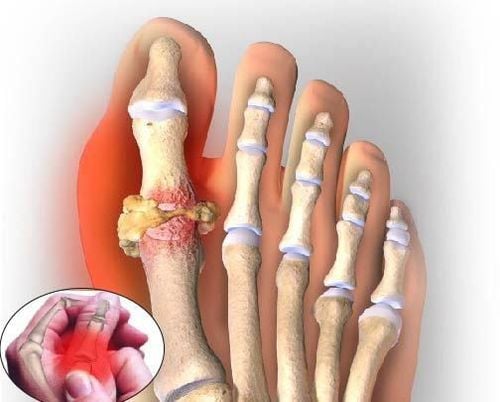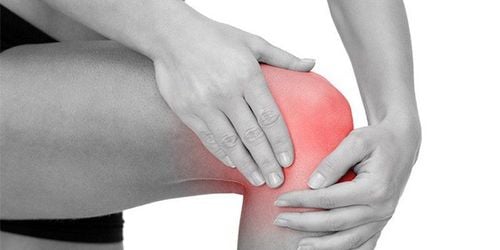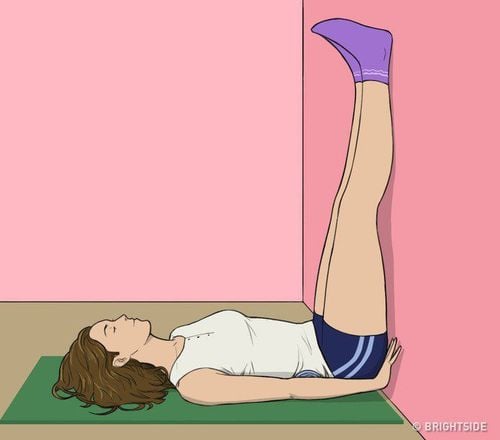This is an automatically translated article.
Numbness in the limbs is the most common syndrome among neurological diseases, encountered in many different subjects and significantly affects daily life.There are many possible causes of numbness in the limbs such as damaged or pinched nerves that can lead to numb fingers, complications of diabetes or it can also be that you are sitting for too long.
1. What is limb numbness?
The initial symptom of numbness in the limbs is described as numbness in the fingertips or toes, the patient feels like a needle or an ant bite. These symptoms can get worse and worse and spread to the wrists, arms ... making the patient feel reduced, even loss of sensation.
Currently, limb numbness is divided into 2 types:
Physiological limb numbness: occurs when sitting for a long time or holding something for a long time, leading to numbness of the limbs. For this type, the symptoms of numbness in the limbs will go away on their own without treatment. Pathological numbness in the limbs: this can be a symptom or a complication of a number of diseases.
Trắc nghiệm: Bận rộn có ảnh hưởng đến sức khỏe của bạn không?
Cuộc sống hiện đại khiến chúng ta vì quá bận rộn mà quên chăm sóc sức khỏe cho chính mình. Ai cũng biết rằng lịch trình làm việc cả ngày có thể khiến bạn kiệt sức, nhưng cụ thể bận rộn ảnh hưởng thế nào tới sức khỏe? Hãy cùng làm thử bài trắc nghiệm dưới đây.
2. In which case is pathological numbness of limbs encountered?
2.1. Numbness in fingers, numbness in hands
Diabetes: If you have diabetes, over time, high blood sugar can damage nerves leading to symptoms of numbness in fingers and hands. This is a complication of peripheral neuropathy. Once high blood sugar has damaged nerves, there is no treatment that can reverse the damage. But your doctor may prescribe a number of medications to help treat symptoms, including antidepressants, anticonvulsants, and skin creams. Besides, to avoid this complication, you should also control your diabetes well to prevent neurological complications from becoming worse.
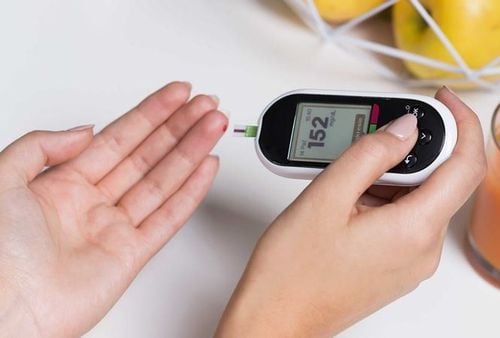
Carpal tunnel syndrome: The median nerve travels down the hand through the carpal tunnel, which is surrounded by the bones of the wrist posteriorly and the carpal ligaments anteriorly, i.e. palmar side. It was a rather narrow passageway, in which the median nerve, blood vessels, and flexor tendons of the finger were located. If you spend a lot of time working at the computer or doing other activities that strain your wrists, irritate or compress the nerves in the carpal tunnel, it will cause numbness in your fingers and hands. and arm.
Alcohol use disorder: Drinking large amounts of alcohol over a long period of time can lead to nerve damage known as polyneuropathy that causes numbness in the fingers.
Migraines with transients: Some migraines, called transients, can affect how you feel and your other senses. If a transient migraine is the cause of your arm numbness, symptoms usually begin within an hour of the headache and usually last less than an hour.
Other causes: Other diseases can also lead to numbness of fingers, hands and arms such as:
Stroke Brain or spinal cord injury Shoulder injury Multiple sclerosis Infection: Lyme disease or syphilis One effect Side effect of chemotherapy Vitamin B12 deficiency Raynaud's syndrome. 2.2. Numbness in toes
Diabetes: High blood sugar and fat levels caused by diabetes can cause nerve damage, affecting your feet and legs (or arms and hands), also known as is a peripheral neuropathy. Up to half of people with diabetes have peripheral neuropathy. If numbness in the toes and other foot problems are associated with the disease and are not felt by the person (eg, boiling water poured on the leg but not felt leading to burns, foot damage) or not treated It can lead to serious complications, even amputation.
Moron neuroma: Moron neuroma causes pain in the anterior part of the foot, where there is thickening of the perineural tissue between the bases of the toes (usually between the third and fourth toes of the foot). ). Common symptoms of this disease include foot pain, paresthesia or numbness of the toes.
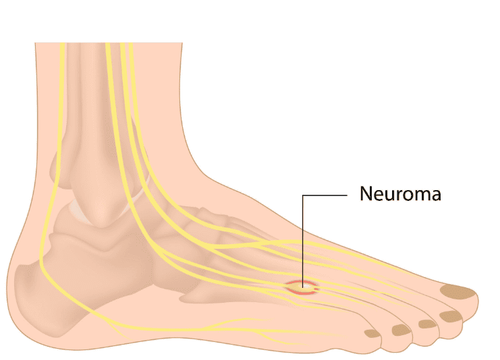
Metatarsalgia: Toe pain (named for the metatarals, which are the long bones in the foot between the arch of the foot and the toe). It is caused by an abnormality in the shape of the foot such as a high arch, bunions or a simple bent and overworked toe leading to numbness in the tips of the toes.
Raynaud's syndrome: Cold weather or stress can slow blood flow to the extremities in some people with Raynaud's syndrome. The toes can become numb and even change color: red, white, or blue.
Guillain Barre syndrome: Guillain-barré syndrome is an acute peripheral nerve damage (roots and nerves in the spinal cord and cranial nerves). This is a neurological emergency, if not detected and treated promptly, the patient is at risk of dying from respiratory failure or aspiration due to swallowing dysfunction or even stopping. heart due to damage to the nerves that supply the heart. The first symptoms of the disease include numbness, tingling in the extremities, first in the lower extremities, then spreading to the upper limbs, sometimes numbness in the face, often appearing on both sides of the body.
Other causes: Other medical problems can cause your toes to go numb such as:
Stroke Brain or spinal cord injury Multiple sclerosis Infections, like Lyme disease or syphilis Side effects of chemotherapy Deficiency vitamin B12
Vinmec International General Hospital is one of the hospitals that not only ensures professional quality with a team of leading medical doctors, modern equipment and technology, but also stands out for its examination and consultation services. comprehensive and professional medical consultation and treatment; civilized, polite, safe and sterile medical examination and treatment space.
Please dial HOTLINE for more information or register for an appointment HERE. Download MyVinmec app to make appointments faster and to manage your bookings easily.
Reference source: Webmd.com




